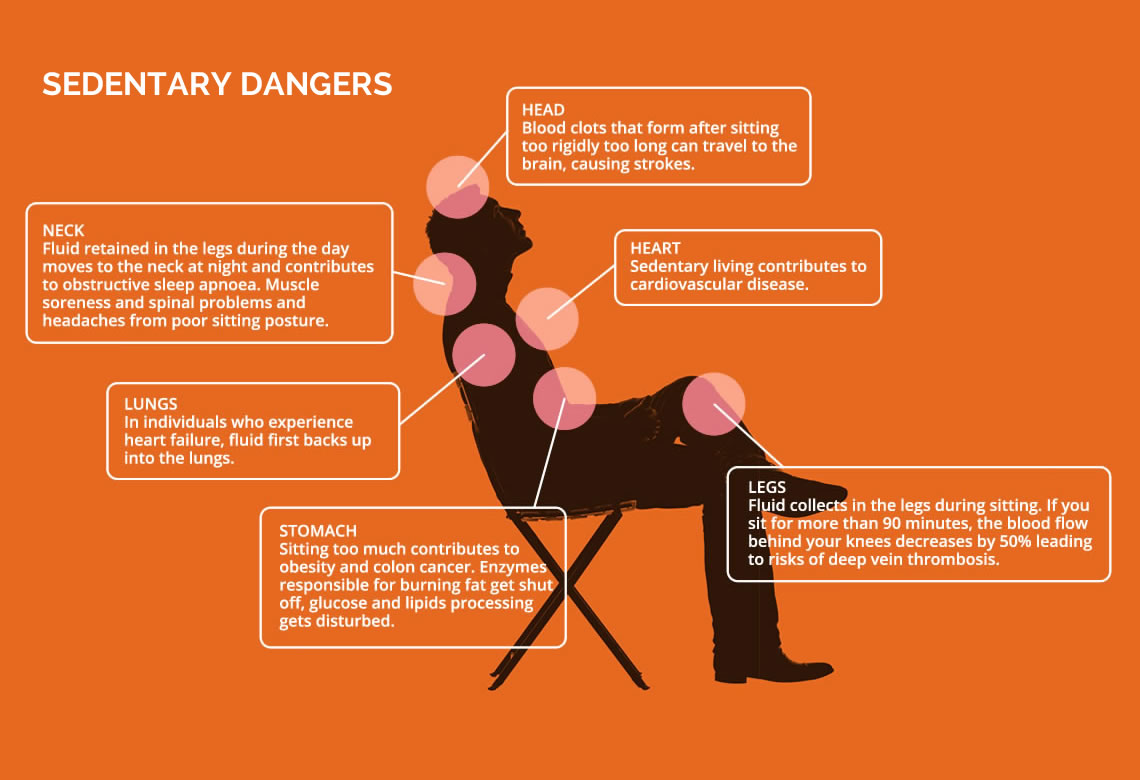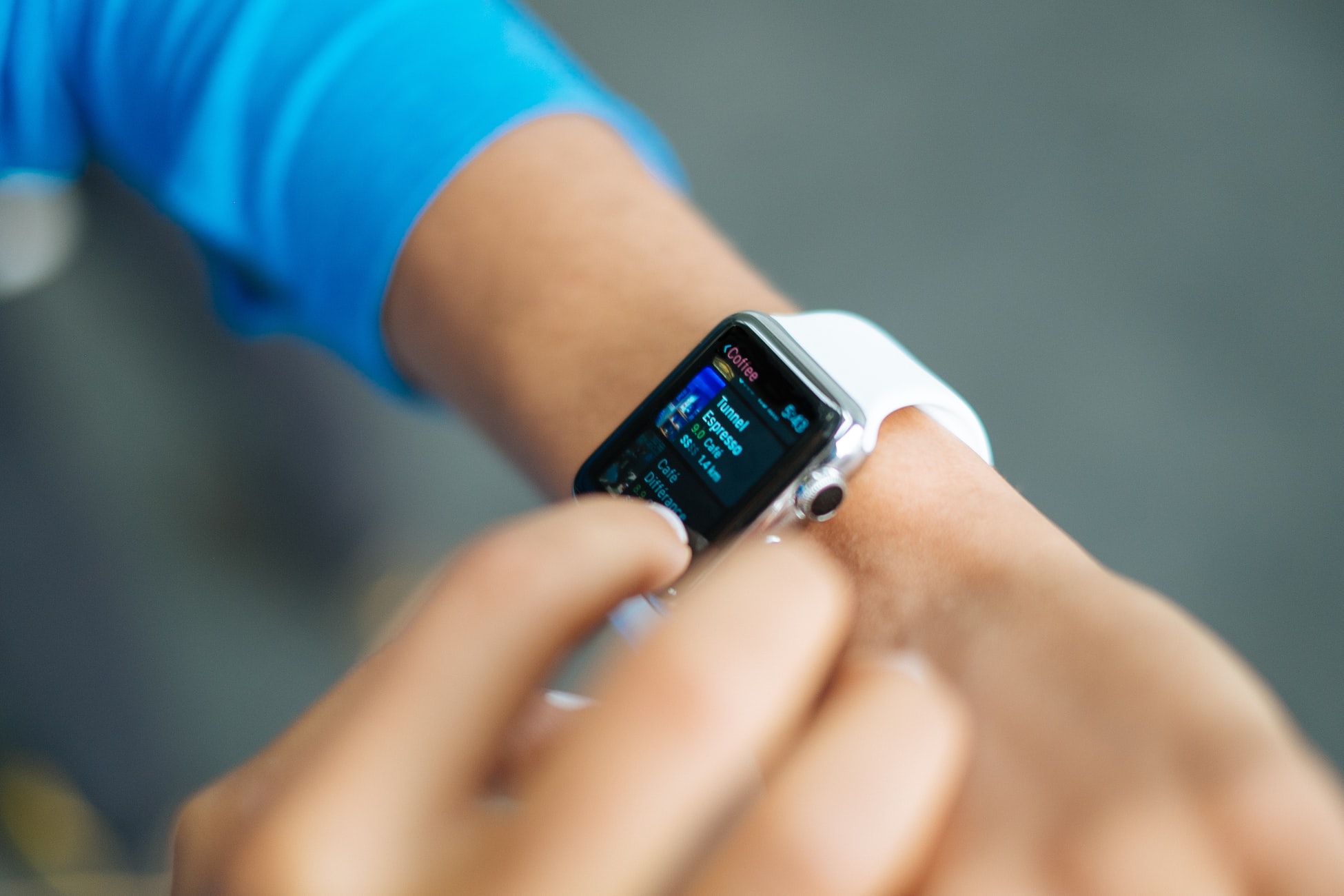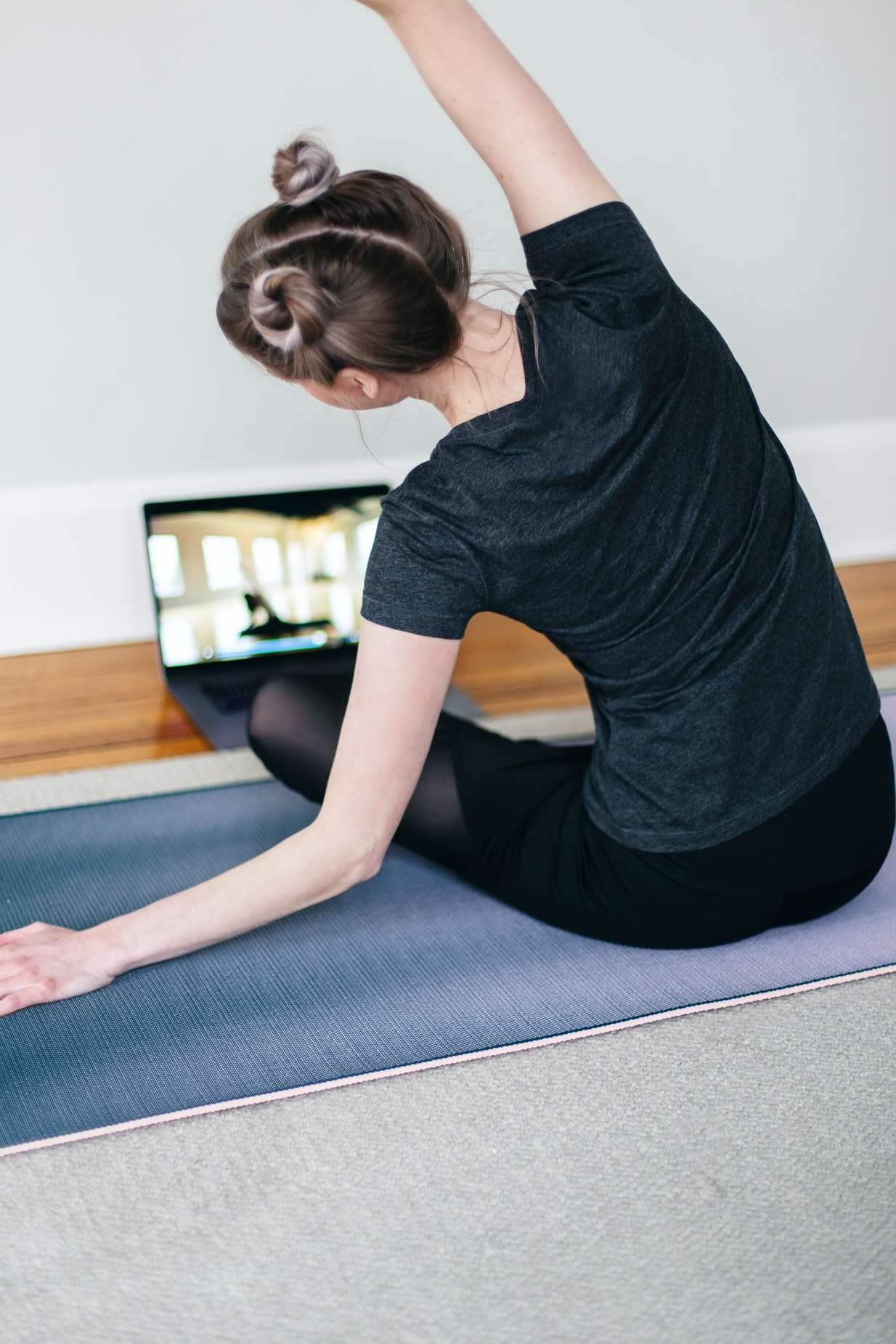
- Personal Growth -
- 10mins -
- 959 views
Stand Up for Better Health: 15 Ways To Sit Less And Move More
Excessive sitting is linked to chronic illness and premature death, so here are 15 smart solutions to keep you healthy and on your toes… literally.
If you Want to Be Healthier, then Sit Less & Get Moving!
Inactivity can be dangerous for your health. Physical inactivity is the fourth-leading risk factor for death and leads to an estimated 3.2 million deaths worldwide, each year according to the World Health Organization — so here are 15 smart solutions to keep you in peak physical condition and on your toes… literally.

Don’t forget to sit less and move more throughout the day
The link between sitting and illness was made in the 1950s by Professor Jeremy Morris who found that the physically active London bus conductors had a lower incidence of coronary heart disease than the sedentary bus drivers.
With our lives spent sitting at desks, in front of screens, on sofas and pretty much anything we want being delivered to our doors, we’ve become sedentary. Excessive sitting is linked to obesity, type 2 diabetes, some cancers and premature death.
Stuart Biddle, Professor of Physical Activity and Health at University of Southern Queensland said in The Huffington Post: “The very common working environment these days is to be sitting down and to be not at all physically active, and that compares very dramatically with what we did many decades ago when we moved in our jobs, and the health consequences of that are pretty dramatic.”
In these times of grocery deliveries, online shopping and sitting in an automatic car wash, you can build extra movement into the day by walking to the shops and cleaning the car yourself – and you may save money at the same time. Professor Biddle’s advice is simple: “Even though 30 or more minutes a day of exercise are extremely important for health and well-being, don’t forget to sit less and move more throughout the day. Look for opportunities to be active: climb stairs, walk and talk, ditch the car where possible”.
We picked a selection of suggestions from HuffPost, Organixx, and infographics by MoveMoreSitLess.

1. The ‘Going to going to work workout‘
Treat your daily journey to work as an opportunity to move more. Ideally, walk or cycle, but most of us use public transport or drive. Stand on the bus or train rather than taking a seat and get off a few stops early to walk the rest of the way. If you drive, park a distance from your workplace and walk. And make use of the free treadmills available at most stations – the stairs and escalator!
2. Stand up every 30 minutes
The Department of Health’s paper Sedentary Behaviour and Obesity advises us to ‘take an active break from sitting every 30 minutes’. Set a phone reminder to get up and move every half an hour: take a coffee break, visit the bathroom, go and talk to a colleague rather than emailing them, or just walk up and down the stairs.

3. Schedule your physical activity breaks
You schedule everything else into your busy day, why not ten minutes for exercise mid-morning and mid-afternoon? Use the time to walk to another department, run an errand or make a phone call during which you can stand and do some stretching exercises. Professor Biddle stresses it’s important to ‘take little breaks so you’re more alert when you come back to work.’
4. Stretch your legs on your lunch break
Clear your head and get some exercise by going for a brisk walk at lunchtime. You could organise an office walking group to encourage each other to leave your desks and get moving. Get out of your chair, change into your athletic shoes, put on a jacket if you need to, set your timer and get outside! A brisk 5-10 minute walk around the block or the parking lot can do wonders for your mental and physical state.
If you are able to use your phone on speaker mode, why not take that important phone call while walking? Setting up “walking meetings” with colleagues and clients is also a great way to get business done and keep your body moving.

5. Change up meeting styles
Hours spent sitting around a boardroom table are doing nobody’s health any good. Research shows that walking has a positive effect on creative thinking and wellbeing, so have some of your meetings on the hoof. Stand-up meetings (being mindful of wheelchair-using or disabled colleagues) tend to be 34% shorter than sit-down meetings – and produce no worse decisions. And if you ever have the opportunity to use a conference bike for a meeting, embrace its potential for exercise and creativity.
6. Ditch the traditional desk and chair
Elevate your laptop on an adjustable desk or simply a box to work standing up. Professor Biddle agrees: ‘a good example is to use one of these elevated desks so you can stand. You may be moving a bit more but you’re continuing to work.’ If you must sit, ditch the creaky chair and sit on an exercise ball – the small movements you use to stay on it give you a mini abdominal workout.

7. Build some stretching exercises into your day
Learn some yoga or Pilates stretches for shoulders, legs and abs that you can do in moments of downtime: waiting for the kettle to boil, at your desk during a conference call or standing after you’ve finished a piece of work. Professor Biddle is unequivocal: ‘The bottom line is we do need to move more and sit less at work for health’.
If you are REALLY on deadline or just can’t afford 5 minutes to get moving, here is a quick and effective stretch that will give you instant energy and stop your back and typing muscles from atrophying: The Donna Eden “Egyptian Stretch.”
As Donna says herself, this is probably the most ancient stretch there is. Simply extend one arm up as high as it will go. Reach for the ceiling or the sky with that arm while the other arm reaches for the floor. Lift your toes and stretch your entire body while you breathe in deep. Exhale to release and change sides.
Other stretches you can do include bending at the waist and letting your hands dangle to the floor then swaying from side to side for 10-15 seconds (be sure to come up slowly) as well as… bouncing! Simply vibrate your entire body while standing and breathing deep for one to two minutes. You will be surprised at how energized this simple exercise can make you feel.
8. Make TV time the solution, not the problem
A Japanese study found that ‘prolonged television viewing was associated with an increased risk of pulmonary embolism death’. Instead, make your television time work for you. Resist the temptation to fast forward through the ads or go straight onto the next episode of Orange Is The New Black and instead, whizz round and do a chore: cleaning the bathroom, folding clothes, emptying the dishwasher or putting out the recycling can all be achieved in five minutes. You could even watch your favourite TV programme while on an exercise bike, ironing, or preparing dinner.

9. Clean Something!
The housework workout: If you work at home, save making your bed for your first break of the day. Vacuum, dust, do some laundry, or weed the walkway. If you are at your office, take out the trash, stand up and dust a shelf, sweep or vacuum if you can. All of these actions are ways to move your body without calling it a “workout.” Set a timer for 5 or 10 minutes or choose to just do one chore for each stretch break you have during the day.
Alternatively, instead of one concentrated weekly sweep, do one room or chore each day and treat it as a daily 15-min workout: put on some energetic music to up your pulse rate and really go for it. There are plenty of videos online to give you inspiration.

10. Switch to manual and do it yourself
In this convenience era of grocery deliveries, online shopping and sitting in an automatic car wash, you can build extra movement into the day by walking to the shops and cleaning the car yourself – and you may save money at the same time. Professor Biddle’s advice is simple: ‘even though 30 or more minutes a day of exercise are extremely important for health and well-being, don’t forget to sit less and move more throughout the day. Look for opportunities to be active: climb stairs, walk and talk, ditch the car where possible’.
11. Use a standing desk
Standing desks are becoming very popular in the office setting, for home use, and also on the go with smaller portable units that can fit on top of a regular table or desk. Make sure you wear comfortable shoes while you stand and you may also want to invest in an anti-fatigue mat for prolonged standing.
Note: If you use a standing desk, experts still advise that you take breaks to move around, stretch and get blood flow going periodically. If you work at a computer, this will give your eyes a break from the screen too.
12. Try a “balance ball chair.”
Another option if you must to sit is to use a “balance ball chair” which will allow your body to stretch through micromovements while you work. The ball and the stand usually come as separate units and the whole thing can be easily purchased for under $200.
What’s more, with most units, the ball simply rests on the chair stand so when you want to do a full ball workout, all you have to do is take the ball out of the stand and you are ready to roll.

13. Use the dog as an excuse
Do you work at home and own a dog? That’s great news! Instead of trying to get him or her to stop staring at you while you work, why not use your pup as an excuse for a quick jaunt outside for some playtime? Throw the ball or frisbee for a few minutes or grab the leash and take him for a bathroom break. Your dog will love you and you’ll love the fresh air (if you own a cat, you’re on your own).

14. Practice Deep Breathing
Stand up and breathe deeply in and out 5-6 times, inhaling for 4 seconds, holding for 4 seconds and exhaling for 4 seconds each time. For a more intense experience, while standing or sitting, practice the “breath of fire.”
Extend your arms in the air, make fists with your hands while keeping your thumbs extended and breathe fast for 30 seconds to a minute, pumping your stomach while you do this. Then slowly release your arms to your sides. This is an ancient yogic modality that is designed to help the nervous system and give instant energy.
If you are still feeling stressed or lethargic, consider a few more minutes of gentle breathing while doing Emotional Freedom Technique (EFT), which is designed to lower stress directly within minutes. If you’re feeling adventurous, try some more advance conscious breathing techniques such as the Wim Hof Method (which is actually done sitting down, but it’s still good practice).
15. Dance!
Ok, we appreciate you may not be able to do this if you work amongst a large number of people, but if you have an office where you can shut the door or you work at home, this option for movement during the day can be very effective, and also a whole lot of fun.
When your timer goes off for your break, choose an upbeat, positively-focused song (makes sure it’s one of your favorites!) and commit to getting down for the duration of the song.
Most popular songs are between 2 minutes and 5 minutes long, creating the perfect little time bubble to get your groove on and your body moving. What’s more, it will probably put a smile on your face as well!
Tips 1-10 are via HuffPost, tips 11-16 via Organixx, infographic by MoveMoreSitLess.


